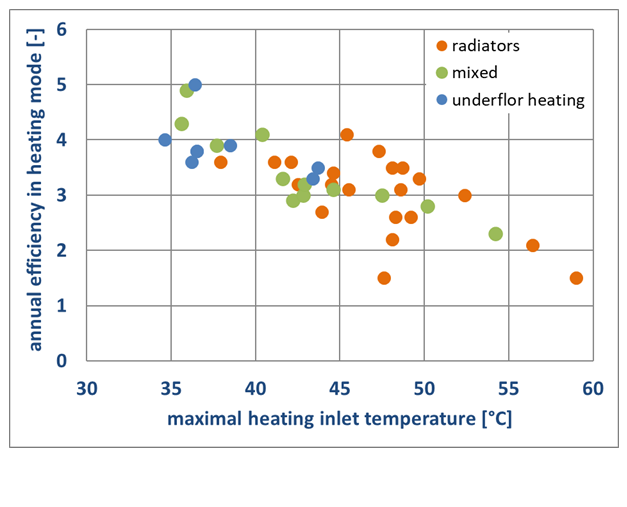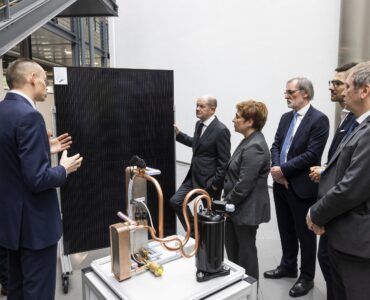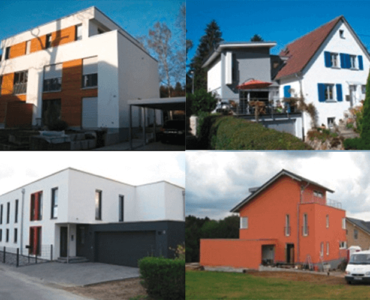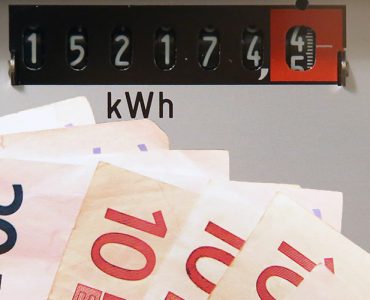Episode 4 of a series on heat pumps in existing buildings: Results from a monitoring project of air-source and ground-source heat pumps
The question of how well a heat pump works can be answered by looking at several aspects and metrics. In most cases, “how well” basically means “how efficient”. The Efficiency of a heat pump is first determined in the laboratory under specific working conditions – in which case so-called “coefficients of performance” (COP values) are determined. Based on these values, it is possible to compare different heat pump models.
Somewhat more practical for end users are the performance values calculated based on the COP and certain operating parameters. These indicate what efficiency can be expected at certain outdoor and heating temperatures. This makes it possible, for example, to estimate the future operating costs of the system. Finally, there are efficiency values determined in the field under real conditions over a certain period of time (usually one year). These values are called “operating figures” and represent the actual efficiency achieved by the devices.
Average efficiency values of heat pumps in operation
Within the last 20 years, Fraunhofer ISE has monitored about 300 heat pumps in the field and determined the operating figures of these systems. The table shows the results from two projects carried out in existing buildings. The projects were conducted approximately ten years apart. The improvement in the average efficiency figures, e.g. from 3.3 to 4.1 for ground-source heat pumps, can therefore be partly explained by the technological improvement of the devices. Another reason for the different results is a different energy status of the buildings in question.
In the first project, mainly non-renovated buildings – 90% of which were heated with radiators – were investigated. In the second project, although all the buildings were between 15 and 150 years old, some had been partially or fully refurbished. All efficiency values were determined for heat pump systems that served for both space heating and domestic hot water. The electricity demand of the additional electric heating elements was taken into account when calculating the values.

In the period from July 2018 to June 2019, the 29 outdoor air heat pumps in question achieved seasonal performance factors (SPF) of 2.5 to 3.8. The mean value was 3.1. Two outliers with particularly good COPs in fully renovated houses were not included in the calculation. For the twelve ground-source heat pumps, the SPFs were between 3.3 and 4.7, with a mean value of 4.1. For the ground-source heat pumps, a negative outlier of 1.8 was not considered. The values achieved show that, even with today’s electricity mix in Germany, heat pumps cause lower CO2 emissions than gas heating with solar thermal support. More on this in a later episode of this blog.
Influence of flow temperatures and different heat transfer systems
Of course, these highly aggregated values only give a rough picture of the heat pump systems investigated. An example of a more detailed evaluation is shown in Figure 2. The graph shows the seasonal efficiency results of 41 air-to-water heat pumps during the provision of space heating. For each system, the achieved efficiency and the maximum (daily) flow temperature can be seen. The three colors symbolize different heat transfer systems. Houses with radiators are marked orange, buildings with underfloor heating are shown in blue, and houses with mixed systems are displayed in green.

A general dependence becomes clear here: the lower the flow temperatures, the higher the efficiency. So, the theory was confirmed in practice. And obviously, the second assumption – systems with underfloor heating tend to achieve higher efficiency values than systems requiring higher flow temperatures – has also been verified in reality.
It is noteworthy, though, that the picture is very differentiated. Most results fall between efficiency values of 3 and 4, with the mean value for all systems being 3.3. Both systems with underfloor heating and those with radiators achieved similar efficiency values. Conversely, however, the seven installations with a very similar maximum flow temperature around 48°C, achieved an annual efficiency of 1.5 to 3.8. An enormous range of results that points to other influencing factors!
For example, the systems with the conspicuously low efficiency values around 1.5 were rather older units and had a very low standard coefficient of performance (COP). Crucially, however, the electric heater had to be used relatively often in these installations due to problems with the settings.
Thus, the heating circuit temperatures are not always the determining factor in the efficiency of the systems. This finding is encouraging for those cases where relatively high flow temperatures are necessary – good efficiency can be achieved in these systems as well. However, it also shows that it is not only the heat transfer system that is crucial, but also the careful planning, installation and adjustment of the heat pump system.
Average efficiency values of heat pumps are good
The research results clearly show that heat pumps as heating source function reliably also in existing buildings and are ecologically advantageous (more on this in another episode of this blog). As a rule, the units worked flawlessly. Malfunctions occurred very rarely during operation. Further optimization can already be observed with the models that have been significantly improved in recent years and is certainly possible in the future with further innovations. Even today, however, the average efficiency values are good.
The next episode of the series will deal with back-up heaters: Doesn’t the use of the back-up heater greatly reduce the efficiency of the heat pump?
Further reading:
Overview on the range of applications for heat pumps.
Episode 3 of this series: Does a house have to be renovated first in order to install a heat pump?
Header picture:
Elbschifferhaus Umgebinde © Bundesverband Wärmepumpe (BWP) e.V. More information on the project (In German)
This blog post is financially supported by the Climate Neutrality Foundation.





Add comment